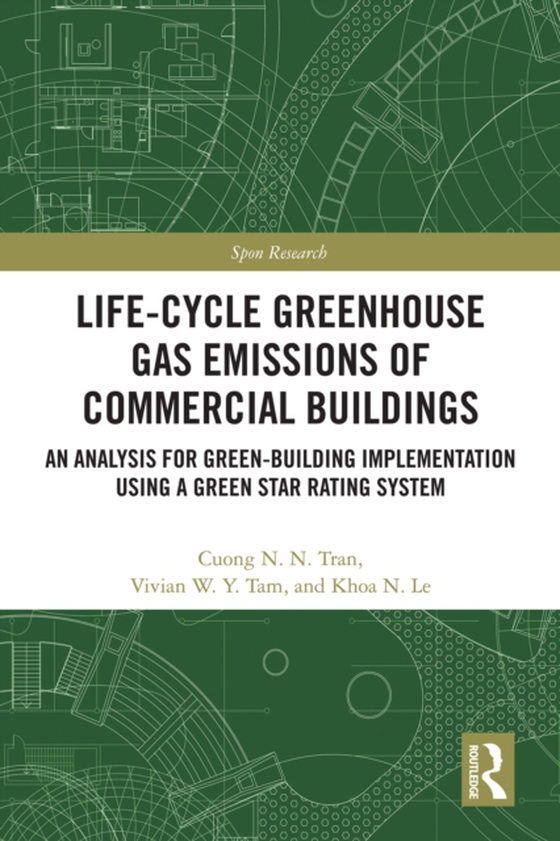
Life-Cycle Greenhouse Gas Emissions of Commercial Buildings e-bog
436,85 DKK
(inkl. moms 546,06 DKK)
This book develops a model to evaluate and assess life-cycle greenhouse gas emissions based on typical Australian commercial building design options. It also draws comparisons between some of the many green building rating tools that have been developed worldwide to support sustainable development. These include: Leadership in Energy and Environmental Design (LEED) by the United States Green Bu...
E-bog
436,85 DKK
Forlag
Routledge
Udgivet
12 juli 2021
Længde
138 sider
Genrer
AMCR
Sprog
English
Format
epub
Beskyttelse
LCP
ISBN
9781000409192
This book develops a model to evaluate and assess life-cycle greenhouse gas emissions based on typical Australian commercial building design options. It also draws comparisons between some of the many green building rating tools that have been developed worldwide to support sustainable development. These include: Leadership in Energy and Environmental Design (LEED) by the United States Green Building Council (USGBC), Building Research Establishment Environmental Assessment Method (BREEAM) by the Building Research Establishment, Comprehensive Assessment System for Building Environmental Efficiency (CASBEE) by the Japanese Sustainable Building Consortium, and Green Star Environmental Rating System by the Green Building Council of Australia.Life-cycle assessment (LCA), life-cycle energy consumption, and life-cycle greenhouse gas emissions form the three pillars of life-cycle studies, which have been used to evaluate environmental impacts of building construction. Assessment of the life-cycle greenhouse gas emissions of buildings is one of the significant obstacles in evaluating green building performance. This book explains the methodology for achieving points for the categories associated with reduction of greenhouse gas emissions in the Australian Green Star rating system. The model for the assessment uses GaBi 8.7 platform along with Visual Basic in Microsoft Excel and shows the relationship between the building's energy consumption and greenhouse gas emissions released during the lifetime of the building. The data gathered in the book also illustrates that the green building design and specifications are becoming more popular and are being increasingly utilized in Australia. This book is important reading for anyone interested in sustainable construction, green design and buildings and LCA tools.
 Dansk
Dansk

